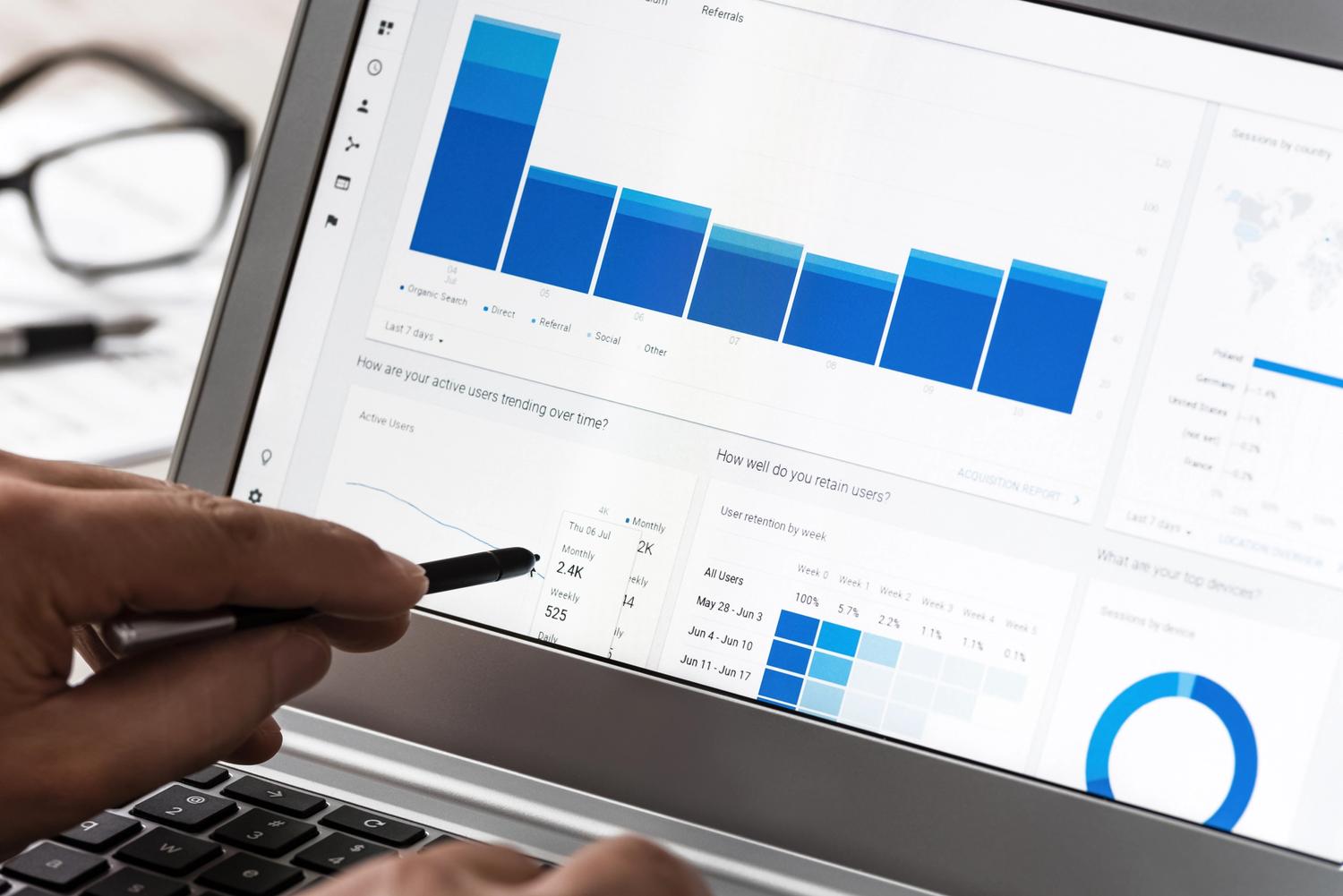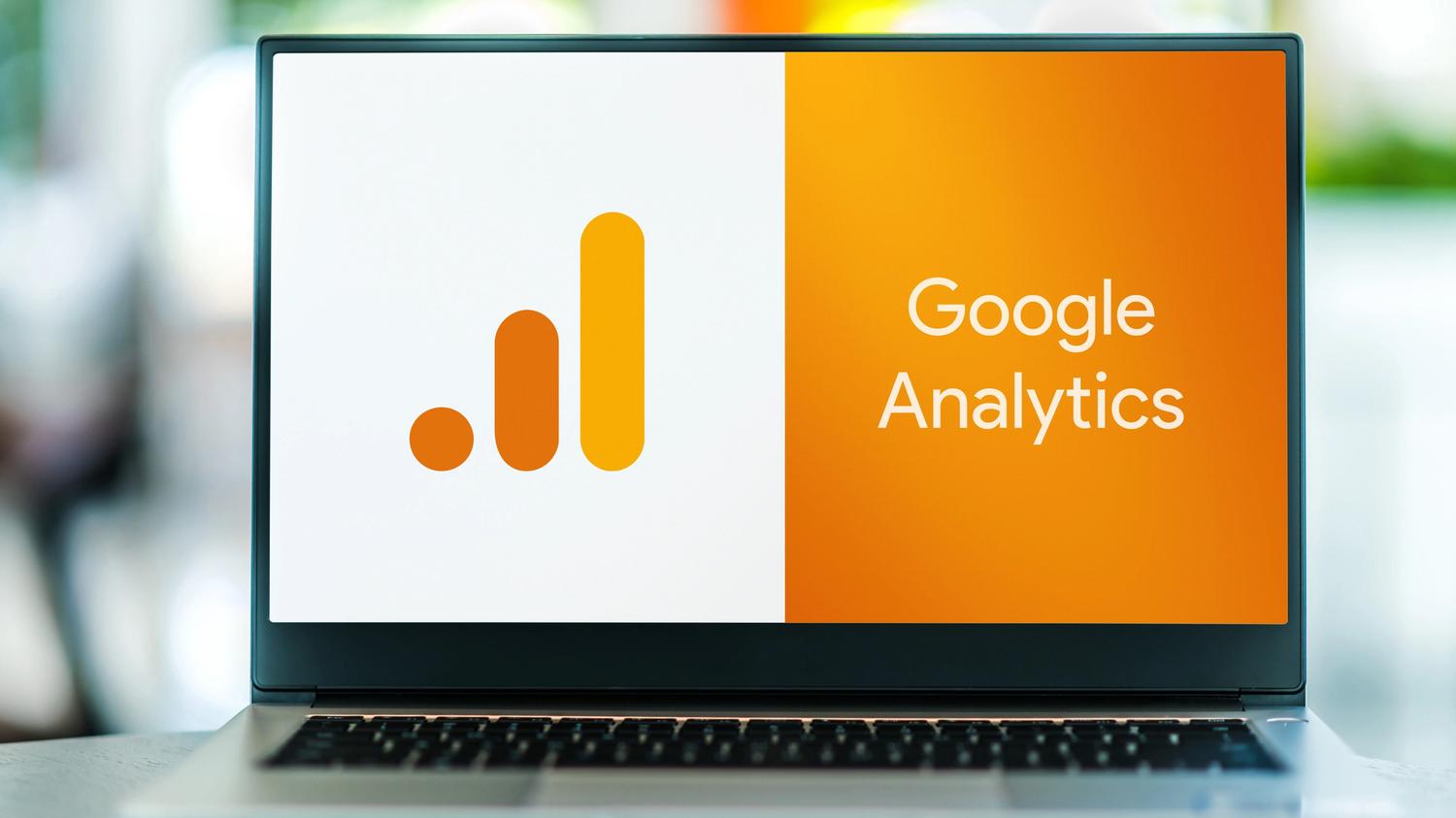Moving with the times
GA4 isn’t just an upgrade, it’s a completely new way of analysing user behaviour that focuses on a customer’s holistic experience with your brand or business in the digital space. GA4 allows you to use the same tracking code on websites and apps (on iOS and/or Android) to collect, measure and analyse data in one place.
The main event
Rather than simply counting ‘hits’ (volume of visits, unique users, time on page, etc.), GA4 is less concerned with how many users visit your site and more interested in what they do when they’re there.
With GA4, you’ll know this and a whole lot more about the way your customers interact with your brand across devices, sites and apps.
Privacy pivot
Privacy regulations have forced tech companies to make significant changes to the way they track and use data. In response, Google has embraced machine learning in GA4 to identify trends and opportunities, and more than fill in the gaps of data that will be missing when third party cookies are phased out.
When should I switch GA4 on? (Hint: now!)
GA4 is a different property to UA and they’ll run alongside each other until GA4 gathers enough data to move from apprentice to master (early predictions are that this will be in around 12 – 18 months). GA4 doesn’t feed in historical data so the time to click ‘GA Set Up Assistant’ in your Admin view is now. Move it to the top of your to-do list so you have access to as much historical data as possible when UA is eventually deprecated.
The close up
Google Analytics 4 (GA4) – One For The Future (And Now)
Launched in mid-October by Google, GA4 is the latest version of Google Analytics. Incorporating Firebase Analytics, GA4 is Google’s latest attempt to enable the collection, measurement, and analysis of data from multiple sources including websites and apps in the same space. It’s the most significant update to Google Analytics since Universal Analytics (the current version).
A Brief History Of Google Analytics
Google acquired Urchin Software back in 2005 and soon after, Google Analytics was born. It was launched as a free product, a major draw for customers. It still remains a free product, though there is the ability to purchase the 360 version.
The first overhaul came in 2008 with the introduction of Classic Analytics. It used the ga.js JavaScript library and some key features like dashboards, custom segments and reports, and real-time analytics were introduced.
Further improvements and enhancements were made, and Universal Analytics (UA) was launched in 2013. This version uses analytics.js, and more recently, the gtag.js JavaScript libraries. It is inherently more accurate than its predecessor, moving away from several client-side cookies like _utmz to a single server-side cookie, _ga.
And finally, GA4 was launched in late 2020 using the gtag.js JavaScript library.

New to GA4: The interface
GA4’s interface differs from what we are all used to with Universal Analytics.
- The left-side navigation bar has been completely revamped with new categories like Engagement and Retention.
- The date selector has also been updated and is similar to what you see across other Google products like Data Studio.
- Data is viewed at the property level as opposed to view level in GA4.
There are a few other changes that have been introduced but it shouldn’t take too long for regular (and non-regular) GA users to get used to the new interface.

Measurement model
Universal Analytics uses a hit-based model, which includes page hits, event hits, eCommerce hits, and social interaction hits. GA4 uses an event-based model instead, where any interaction can be captured as an event, and UA hit types translate into events in GA4.
There are four event categories in GA4 – automatically collected events, enhanced measurement events, recommended events, and custom events.
| Hit Type in Universal Analytics property | Measurement in Google Analytics 4 property |
|---|---|
| Page view | Event |
| Event | Event |
| Social | Event |
| Transaction/e-commerce | Event |
| User timing | Event |
| Exception | Event |
| App/screen view | Event |
Metrics and dimensions
A new measurement model means new metrics, with many of them adapted from Firebase Analytics like Screen Views, Average Engagement Time etc.
Some existing metrics are calculated slightly differently in GA4 because of this new measurement model. Sessions, for example, according to Google, may have a slightly lower count in GA4 when compared to Universal Analytics.
Certain features like Content Grouping won’t be available in GA4, but there will be ways to create something equivalent.
Website and app data
GA4 allows users to set up data streams for all their data sources, websites, or mobile devices.
This allows users to analyse all their data together and for de-duplication across devices if everything is set up accurately. Just having all the data in the same property de-duped will improve the accuracy and effectiveness of the insights that users get from GA4.
Debugging
GA4 comes with a Debug view that allows you to check what events are triggering on your website or app.
It’s not as comprehensive as what’s available in Google Tag Manager but it’s a handy verification tool.
Big query linking
GA4 offers Big Query Linking for free so users can access raw data – something only available to GA360 users at the moment.
Big Query opens up a whole lot of opportunities to quickly analyse data and derive insights that might not be otherwise available or visible. Users can combine this data with their customer data (usually housed in a CRM tool) where possible, opening up opportunities to visualise the entire user journey and optimise channels based on true performance.
Nest steps
GA4 is definitely the right step towards the future, but it’s not a finished product. It’s still in beta and is probably months away from getting to the same level as Universal Analytics.
The recommendation here is to run both Universal Analytics and GA4 in parallel and let GA4 collect data until it becomes the primary platform (or Universal Analytics is deprecated). This will mean that users will have enough historical data available to them when the platforms do switch as it’s unlikely that historical Universal Analytics data will become available in GA4 due to a different measurement model and metrics.
Users will also benefit by familiarising themselves with the new interface, metrics, and reports by setting GA4 up as soon as possible.
Google has created a handy tool available in all Universal Analytics accounts to help users create GA4 properties called the GA4 Setup Assistant.
Conclusion
Indago’s team are well versed in setting up all types of Google Analytics accounts and GA4 is no different. If you’re looking for help or guidance please get in contact with your account manager or contact us through the website.
Written by
Preet Singh





